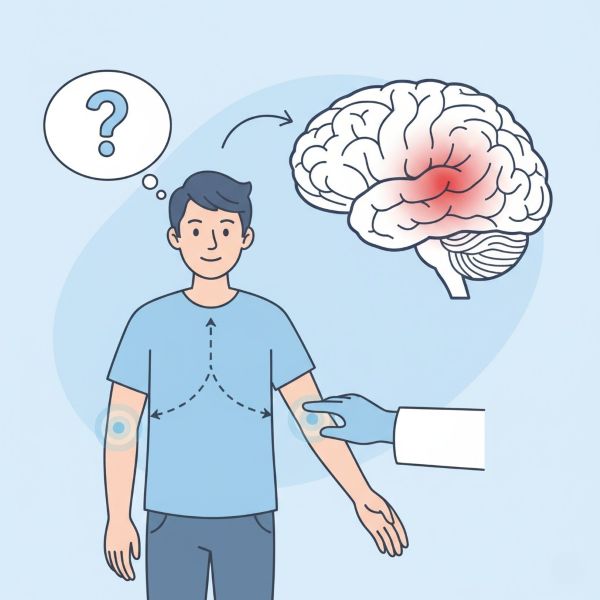Alloesthesia
Definition and Clinical Features
Alloesthesia (also allesthesia) is a sensory disorder in which a stimulus applied to one side of the body is perceived at the corresponding point on the opposite side. The perception is often delayed by about half a second. This phenomenon can occur in different sensory modalities:
- Tactile Alloesthesia: A touch on one limb is felt on the contralateral limb. The trunk and proximal limbs are affected more often than the face or distal limbs.
- Visual Alloesthesia: An object seen in one visual hemifield is illusorily transposed to the contralateral hemifield.

In alloesthesia, a sensory stimulus applied to one side of the body is perceived at the mirror-image location on the opposite side.
Causes and Pathophysiology
The mechanism of alloesthesia is uncertain. Some theories propose it is a primary disturbance within sensory pathways, while others suggest it is a manifestation of sensory neglect.
Tactile alloesthesia may be seen in the acute stage of right putaminal hemorrhage and occasionally with anterolateral spinal cord lesions. Visual alloesthesia is described in conditions like "top of the basilar" syndrome or with occipital lobe tumors. A rare variant, "phantom alloesthesia," has been described where stimulation of a healthy limb evokes a sensation in the contralateral phantom limb.
References
Kawamura M, Hirayama K, Shinohara Y, Watanabe Y, Sugishita M. Alloaesthesia. Brain 1987; 110: 225-236
Cross References
Allochiria; Allokinesia; Neglect

